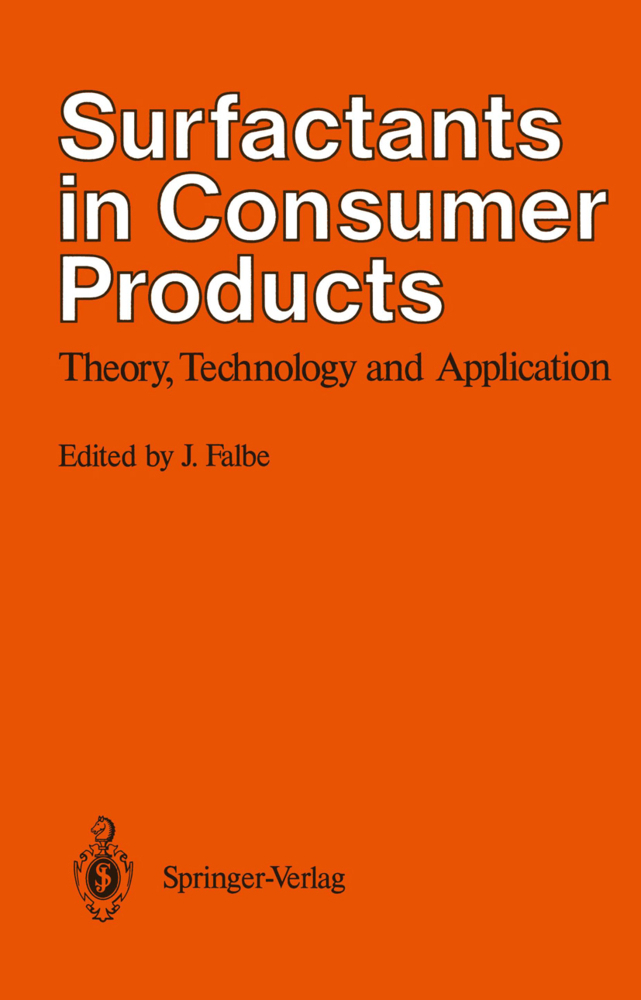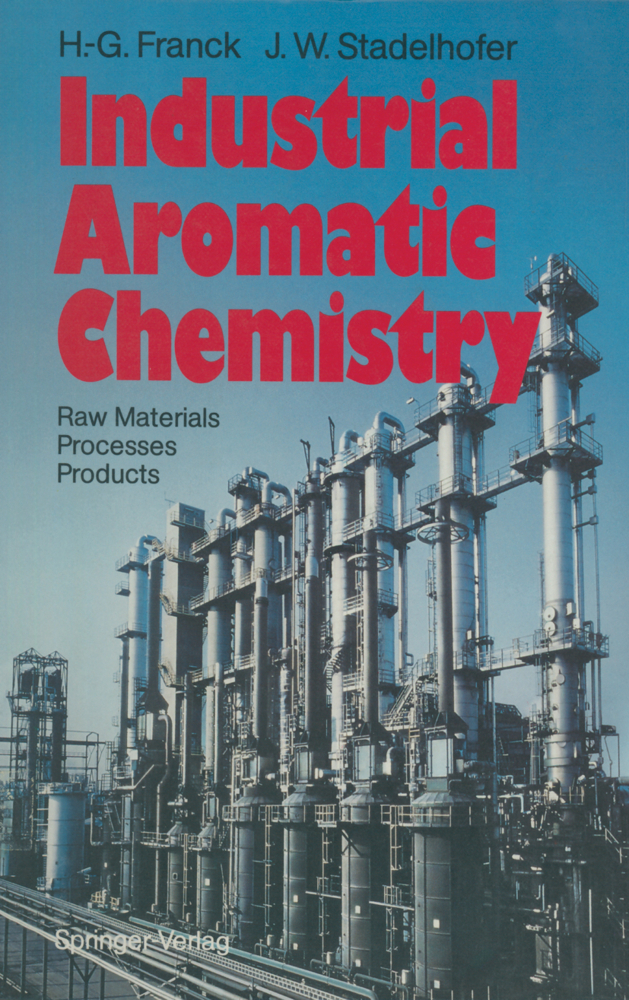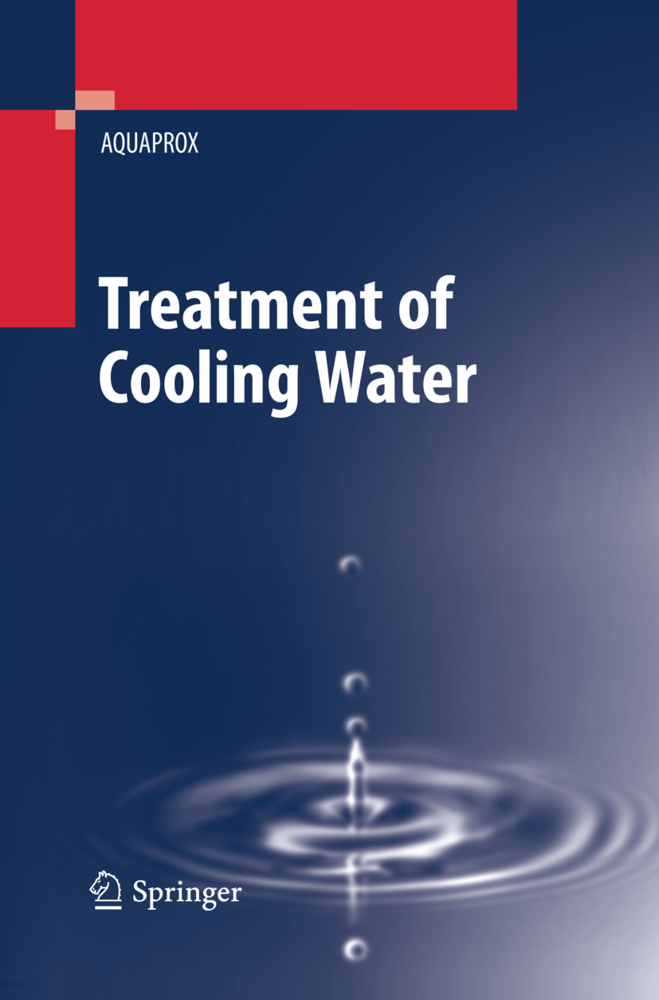Surfactants in Consumer Products
Theory, Technology and Application
Surfactants in Consumer Products
Theory, Technology and Application
In to days market, custom formulated surfactants are offered for a wide range of applications. The need for surfactants in detergents, cleaning agents, cosmetics & toiletries is second only to an expanding demand in industrial applications. But even within the non-industrial areas the demands have undergone significant changes in recent years. For example, washing and cleaning temperatures have substantially decreased with increased energy conservation attitudes, and more stringent regulatory requirements in the area of ecology and toxicology are leading to new product profiles. New manufacturing technologies and an increased utilization of natural raw materials also factor into this continuing evolution. These changes and trends have been described in numerous publications. However, a summary and survey of these developments is currently missing. The book presented here "Surfactants in Consumer Products" is intended to close this gap. The editor and authors dedicate this work to Dr. Dr. h.c. Konrad Henkel on the occasion of his 70th birthday. Dr. Henkel, himself a scientist and industrialist, contributed signifi cantly to developments in the surfactant field. In the nineteen-fifties, he initiated the change from soap based detergents to synthetic detergents within Henkel. At the same time, dishwashing detergents utilizing various synthetic surfactants were also developed, and became the basis for modem manual and mechanical dishwashing.
2.1 Surfactant Structure and Classification
2.2 Application of Surfactants
2.3 Literature
3 Synthesis of Surfactants
3.1 Raw Materials
3.2 Surfactants
3.3 Literature
4 Interfacial and Colloidal Properties
4.1 Solubility of Surfactants
4.2 Interfacial Activity and Micelle Formation
4.3 Spread and Adsorbed Monolayers
4.4 Surfactant Aggregates
4.5 Adsorption on Solid Surfaces
4.6 Theory of Washing and Cleaning
4.7 Literature
5 Performance in Detergents, Cleaning Agents and Personal Care Products
5.1 Detergents
5.2 Dishwashing Detergents and Hard Surface Cleaners for Household and Institutional Purposes
5.3 Cosmetics and Toiletries
5.4 Literature Sections 5.1, 5.2, 5.3
6 Manufacture of Consumer Products
6.1 Manufacture of Powder Products
6.2 Manufacture of Liquid Products
6.3 Manufacture of Medium-Viscosity to High-Viscosity Products
6.4 Manufacture of Bar Soap from Natural Raw Materials
6.5 Manufacture of Bar Soaps Based on Synthetic Surfactants
6.6 Literature
7 Analysis of Surfactants and Surfactant Formulations
Dr. G. Schwarz, Dr. E. Vaeth
7.1 Introduction
7.2 Inorganic Components in Detergents and Cleaning Agents
7.3 Organic Components in Detergents
7.4 Literature
8 Environmental Impact
8.1 Introduction
8.2 Components of Detergents, Cleaners and Cosmetics
8.3 Environmental Aspects
8.4 Conclusions
8.5 Literature
9 Biological Effects, Toxicology and Human Safety
9.1 Introduction
9.2 Biochemical Properties of Surfactants
9.3 Toxicokinetics of Surfactants
9.4 Local Effects
9.5 Systemic Effects
9.6 Conclusions on Consumer Safety
9.7 Summary
9.8 Literature
10 Economic Aspects
10.1 Production Volumes and Application Areas of Surfactants
10.2 Detergents and Cleaning Compounds
10.3 Personal Care Products
10.4 Literature
11 Development Trends
11.1 Preamble
11.2 Consumer Products
11.3 Ingredients of Consumer Products
11.4 Outlook
11.5 Literature
12 Definition of Important Terms
12.1 Terms
12.2 Literature.
1 Historical Review
2 Structure and Application of Surfactants2.1 Surfactant Structure and Classification
2.2 Application of Surfactants
2.3 Literature
3 Synthesis of Surfactants
3.1 Raw Materials
3.2 Surfactants
3.3 Literature
4 Interfacial and Colloidal Properties
4.1 Solubility of Surfactants
4.2 Interfacial Activity and Micelle Formation
4.3 Spread and Adsorbed Monolayers
4.4 Surfactant Aggregates
4.5 Adsorption on Solid Surfaces
4.6 Theory of Washing and Cleaning
4.7 Literature
5 Performance in Detergents, Cleaning Agents and Personal Care Products
5.1 Detergents
5.2 Dishwashing Detergents and Hard Surface Cleaners for Household and Institutional Purposes
5.3 Cosmetics and Toiletries
5.4 Literature Sections 5.1, 5.2, 5.3
6 Manufacture of Consumer Products
6.1 Manufacture of Powder Products
6.2 Manufacture of Liquid Products
6.3 Manufacture of Medium-Viscosity to High-Viscosity Products
6.4 Manufacture of Bar Soap from Natural Raw Materials
6.5 Manufacture of Bar Soaps Based on Synthetic Surfactants
6.6 Literature
7 Analysis of Surfactants and Surfactant Formulations
Dr. G. Schwarz, Dr. E. Vaeth
7.1 Introduction
7.2 Inorganic Components in Detergents and Cleaning Agents
7.3 Organic Components in Detergents
7.4 Literature
8 Environmental Impact
8.1 Introduction
8.2 Components of Detergents, Cleaners and Cosmetics
8.3 Environmental Aspects
8.4 Conclusions
8.5 Literature
9 Biological Effects, Toxicology and Human Safety
9.1 Introduction
9.2 Biochemical Properties of Surfactants
9.3 Toxicokinetics of Surfactants
9.4 Local Effects
9.5 Systemic Effects
9.6 Conclusions on Consumer Safety
9.7 Summary
9.8 Literature
10 Economic Aspects
10.1 Production Volumes and Application Areas of Surfactants
10.2 Detergents and Cleaning Compounds
10.3 Personal Care Products
10.4 Literature
11 Development Trends
11.1 Preamble
11.2 Consumer Products
11.3 Ingredients of Consumer Products
11.4 Outlook
11.5 Literature
12 Definition of Important Terms
12.1 Terms
12.2 Literature.
Falbe, Jürgen
| ISBN | 9783642715471 |
|---|---|
| Artikelnummer | 9783642715471 |
| Medientyp | Buch |
| Auflage | Softcover reprint of the original 1st ed. 1987 |
| Copyrightjahr | 2011 |
| Verlag | Springer, Berlin |
| Umfang | 548 Seiten |
| Abbildungen | XXIV, 548 p. |
| Sprache | Englisch |











